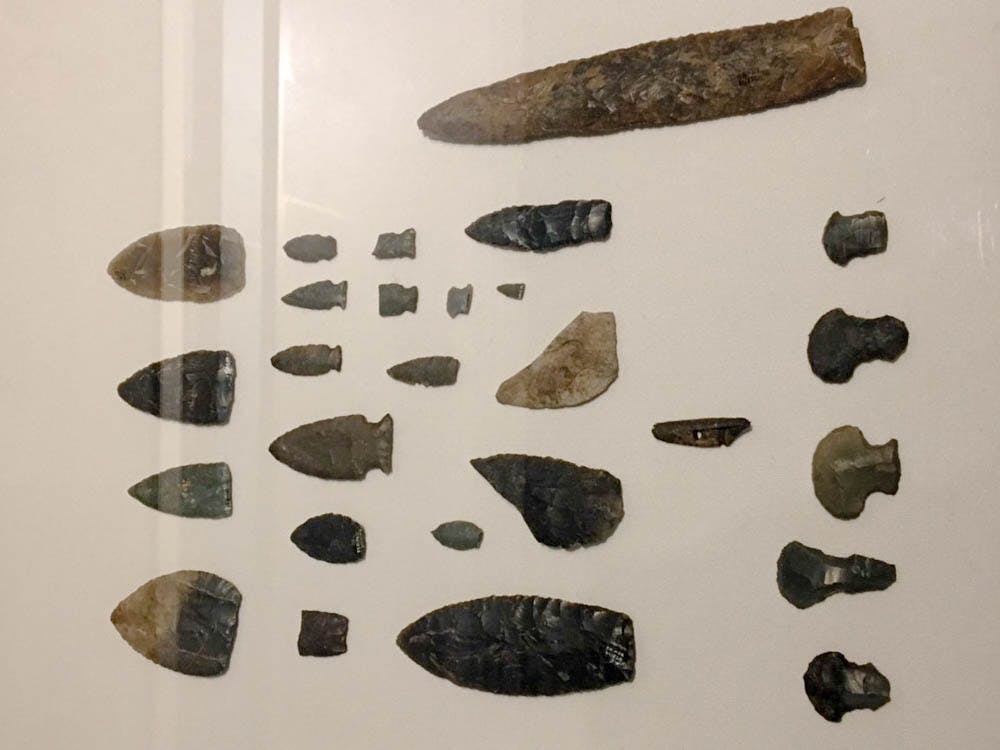As temperatures drop, University researchers continue studying the wintry climes of the North at the University’s renowned Circumpolar Laboratory.
The lab is tucked away in the Haffenreffer Museum of Anthropology’s Collections Research Center in Bristol. Founded in 1973 by Douglas Anderson, the lab was created as a part of the University’s program in anthropology. It is the “federal repository for important ethnographic and archaeological collections primarily from northwestern Alaska,” according to its website.
In celebration of the Haffenreffer’s 60th anniversary, the museum created an exhibition entitled “Northern Horizons, Global Visions: J. Louis Giddings and the Invention of the Haffenreffer Museum of Anthropology.” The exhibition, currently held at Manning Hall, explores the life and work of the Haffenreffer’s first director and displays some of the artifacts from the Circumpolar Lab’s collections.
Despite its vast archives and rich history, the Circumpolar Lab appears to be largely unheard of by the Brown community. The reason for this seems to be twofold: The Haffenreffer’s Research Center is not open to the public, and it is not located on campus. Nevertheless, individuals involved with the Circumpolar Lab and with Arctic research appreciate the value of the laboratory and the artifacts it houses.
A chilly history
The history of the Circumpolar Lab begins with the Haffenreffer’s first diector, J. Louis Giddings, said Kevin Smith, deputy director and chief curator of the museum. Until 1955, the museum was privately owned by the Haffenreffer family. But when its founder passed away, the family gave the museum to Brown. Since Brown had no archeology department at the time, the University hired Giddings, a “pioneering Arctic archeologist,” to be its first director, Smith explained.
Giddings came to Brown in 1956 and began taking students with him to the Arctic to conduct research, Smith said. The artifacts Giddings and his students excavated came back to Bristol, where they were housed in the Haffeneffer. “Unfortunately in 1964, at the peak of his productivity, Giddings was involved in a car accident and passed away a week later,” Smith said. Douglas Anderson, a former Brown graduate student of Giddings, took over Gidding’s position in the Department of Anthropology and continued on with the Arctic program at Brown.
“In 1973, I established the lab for circumpolar studies,” said Douglas Anderson, emeritus professor of anthropology. He aimed to enable students to take courses in Arctic studies and provide research opportunities for them in Alaska and Northern Canada. When the lab was first established, it was formed as a part of Brown’s program in anthropology, Anderson said. However, “in the last four to five years, the Department of Anthropology has shifted its geographical focus away from the Arctic” and it became clear that “for the laboratory to function well, it could no longer be a part of the academic program — it needed to be fully handed over to the (Haffenreffer).” The laboratory continues to be run by the museum in Bristol.
The lab today
While the lab may be located “19 miles off campus, and it is hard to bring students down to work with the collections,” it still remains “very active,” Smith explained, adding that in the past 10 years, the lab received almost $2 million in federal grants to conduct research. One of the lab’s ongoing projects concerns viking and medieval archeology. Another research project focuses on “the roles of women and their production — from the Canadian Arctic, all the way to Norway and Denmark,” Smith described. The lab is also currently working with x-ray fluorescence, Smith said — a method used to examine the elemental composition of objects, in order to trace where they came from and how far they moved.
The collections at the Circumpolar Lab continue to fascinate many researchers. “The collections we have here go back to the end of the last ice age, spanning 11-12,000 years of pre-history,” Smith described. They consist of various “archeological materials — anything that has been brought back from the Arctic on expeditions,” Anderson said. The 800,000-850,000 objects in the lab’s collections include a unique pair of snow goggles. Snow goggles, in general, help to keep the glare of the ice and snow from blinding the wearer, Smith said. “But these ones are actually made to also make the face of the hunter take on the characteristics of the seals that he’s hunting,” he added. “The holes for the eyes actually have the tear ducts that the seal has.”
Another feature that sets Brown’s circumpolar lab and Arctic researchers apart is their approach to consulting with native communities. This originates from Giddings’ own method of collaborating with indigenous groups, which was unlike the reseach of most archeologists at the time and made everything that Brown did “different and important — and very ethically responsible from a very early time,” Smith explained.
Gentis said these consultations with the native peoples have a dual benefit: They enable researchers to identify the artifacts and understand how they were used and give indigenous communities “a window into their past.”





